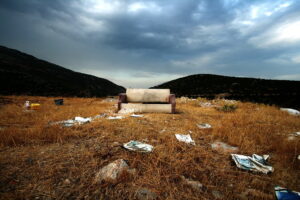Scottish Border Council unveils new solar powered bus stops
Real Time Passenger Information for remote communities will now be delivered through 100% renewable electricity.

Working in partnership with Journeo, the Scottish Council has installed 15 sustainable bus stop displays, cutting associated emissions and power usage, and driving down the cost of powering the infrastructure through the National Grid.
The ‘e-paper’ displays have been specifically designed for easy of installation and minimal maintenance, making an ideal solution for locations which have limited connection to mains electricity and accessibility issues. This latest equipment has been funded by Scotland’s Community Bus Fund. The displays are part of the Council’s longer term strategy to improve passenger services and experience in rural areas.
‘These innovative displays from Journeo have extremely low power and data requirements; they can be easily fitted to existing poles and they are quickly up and running,’ said Dan Cathcart, Localities’ Transport Officer, Scottish Borders Council. ‘We don’t have to close roads or fund road works to lay new power cables. But the big winners are our customers in rural communities where they will benefit from more consistent information about their bus services.’
‘The most costly and time-consuming challenge for a Local Transport Authority rolling out real time information is the need for power infrastructure to be in place,’ added Ted Beatson, Group Sales Manager at Journeo. ‘If it isn’t, it is extremely costly and disruptive to carry out the necessary works. Our e-paper displays are ideal in situations where complicated and costly works need to be avoided. Using our self-sustained units, which fit quickly to existing poles, need no direct power connection and are proven to work in the region, is a win-win for the Council and the community.’
More transport:
London bus depot completes £4m overhaul to power electric fleets
UK Government confirms £88m for zero-emission transport solutions
Image: Journeo
















